Known as “The City of Seven Hills,” Lisbon is charming, colorful and filled with mosaic tiled buildings stacked up on cobblestone streets. We spent a few days in December discovering all the fun things to do – riding the old cable cars and listening to the sound of Fado in Lisbon or rather Lisboa as locals call it. Nothing against Lisbon, we rang in 2020 watching fireworks at Praça do Comércio!
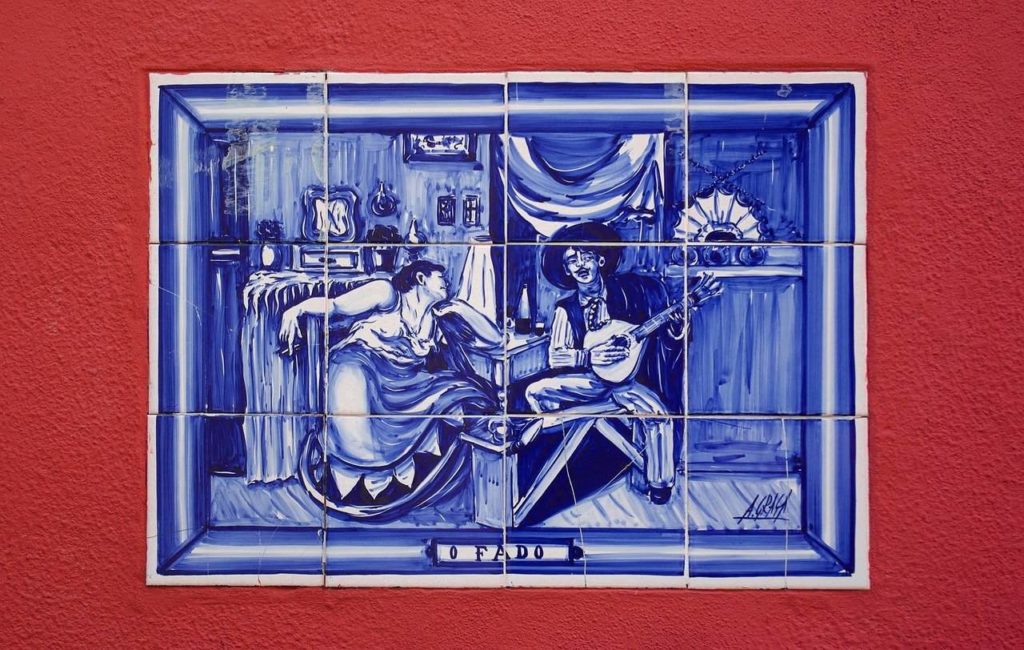
WHAT IS IN THIS POST
Some Lisbon Facts and Tips
- The legend goes that Lisbon was founded and named by Ulysses (Odysseus) as Ulissipo or Olissopo, which has its origins in the Phoenician words “Allis Ubbo”, meaning “enchanting port”.
- The currency of Portugal is the Euro (€). Most establishments take credit cards, but as always a good idea to have little cash handy.
- Portuguese is the official language of Portugal but most people speak a little English.
- Trams and Tuk-tuks are the best way to get around in Lisbon
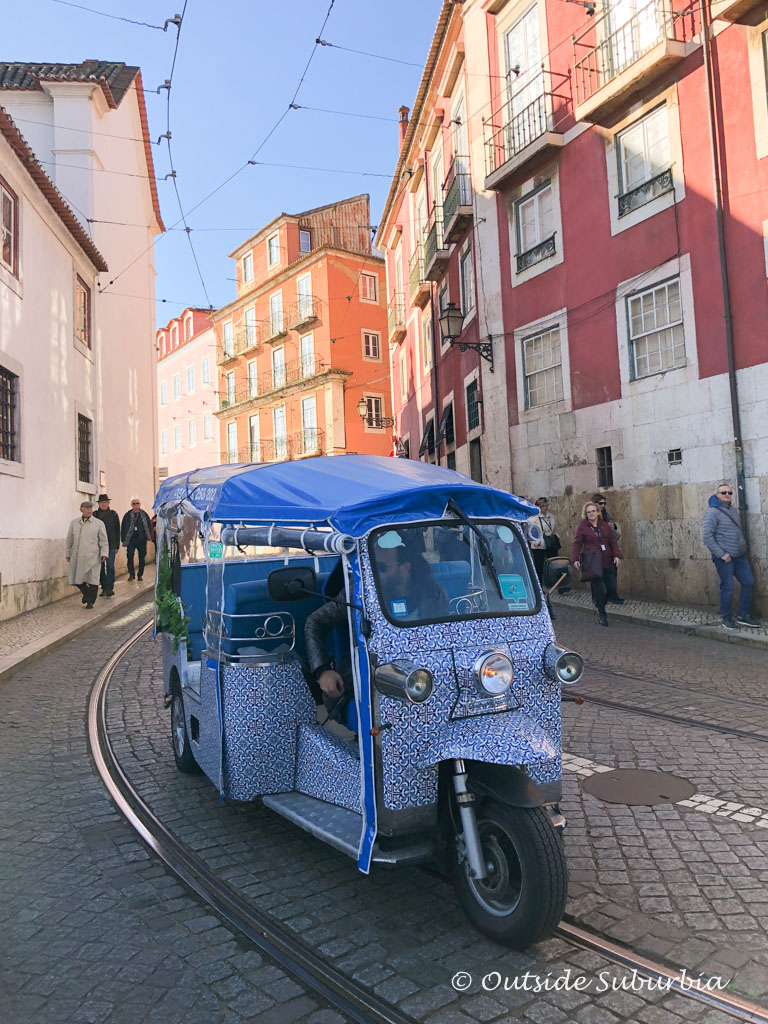
3 Days / 72 hours in Lisbon Itinerary
We spent a perfect 3 days in Lisbon during our recent December trip. The weather was perfect and the city was not crowded. We got to see some scenic viewpoints, major sights, attractions, and fun things to do in Lisbon. We actually spent 4 days, and not 3 days in Lisbon, but you can cover pretty a lot even if you only have 2 or 3 days in Lisbon.
3 or 4 DAY LISBON ITINERARY
Day 1 – Alfama, Baixa and Chiado | View points | Elevador de Santa Justa | Fado
Day 2 – Jerónimos Monastery | Belém | Discoveries Monument| Parque das Nações
Day 3 – Cascais| Cabo da Roca | Sintra
Extra Day – Visit Evora
See this short visual story of our 3 days in Lisbon!
Day 1 in Lisbon
On the first day in Lisbon, visit The Sé, the Cathedral of Lisbon, stop at the medieval castle and stroll the medieval streets of Alfama. Have lunch in Chiado and wander the afternoon sightseeing in the Baixa and take the Santa Justa elevator. End the night at a fado restaurant.
There is usually a long queue to go up the Elevador de Santa Justa. But can get a similar view by walking up to the Convento do Carmo and climbing up to the viewpoint. The intricate wrought-iron work and views are worth it!

Day 2 in Lisbon
On the second day visit some of Lisbon’s top attractions districts located along the river. Jerónimos Monastery, Belém and Parque das Nações are all close to each other. Plan to visit Belém Tower last, the sunset from the nearby care is remarkable.
Day 3 in Lisbon
Day three in Lisbon involves a day trip to Sintra and Cascais. On the way stop at Cabo da Roca, which is Portugal and continental Europe’s westernmost point. If the weather is nice Cascais is nice to stop for some beach time. We LOVED Sintra and Cascais!
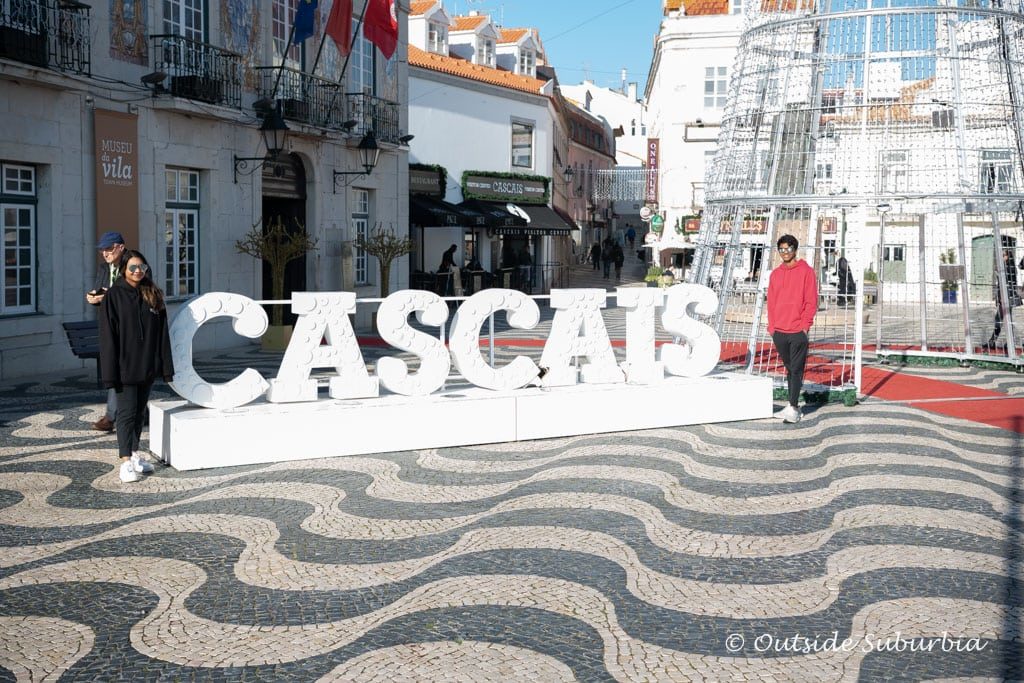
Extra Day in Lisbon
If you have an extra day in Lisbon go on a day trip to Evora, where you will find Roman ruins, a 12th-century cathedral, an eerie chapel of bones along with charming cobblestoned streets lined whitewashed houses trimmed with bright yellow borders.
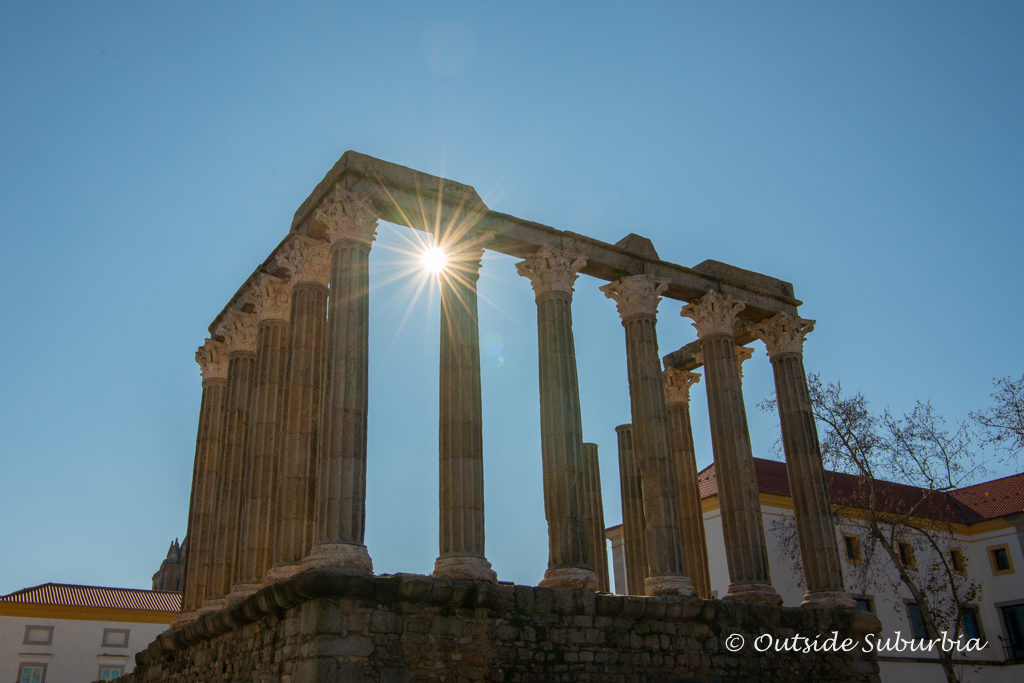
See: Where we stayed in Lisbon
It was quiet and tucked away in the city’s diplomatic quarter!
Best Experiences in Lisbon
Besides eating egg tarts and shopping for tinned sardines, here are some experiences in Lisbon we love.
- Explore the Jerónimos Monastery
- Visit Padrão dos Descobrimentos Monument
- Climb to the Top of the Belém Tower or catch a sunset near by
- Ride the Tram and walk through some old neighborhoods
- Watch a sunset from one of the many miraduoros (viewpoints) in Lisbon
- Listen to some Fado
Best things to do in Lisbon
The Sé, the Cathedral of Lisbon
The Sé, the Cathedral of Lisbon, is one of the oldest buildings in the city. It is one of Lisbon’s most iconic attractions and landmarks. Originally constructed in the twelfth century shortly after the reconquest of the city, the Roman cathedral stands tall with its sturdy Romanesque towers. The church had gone through many alterations over the centuries but has retained its original Romanesque character.
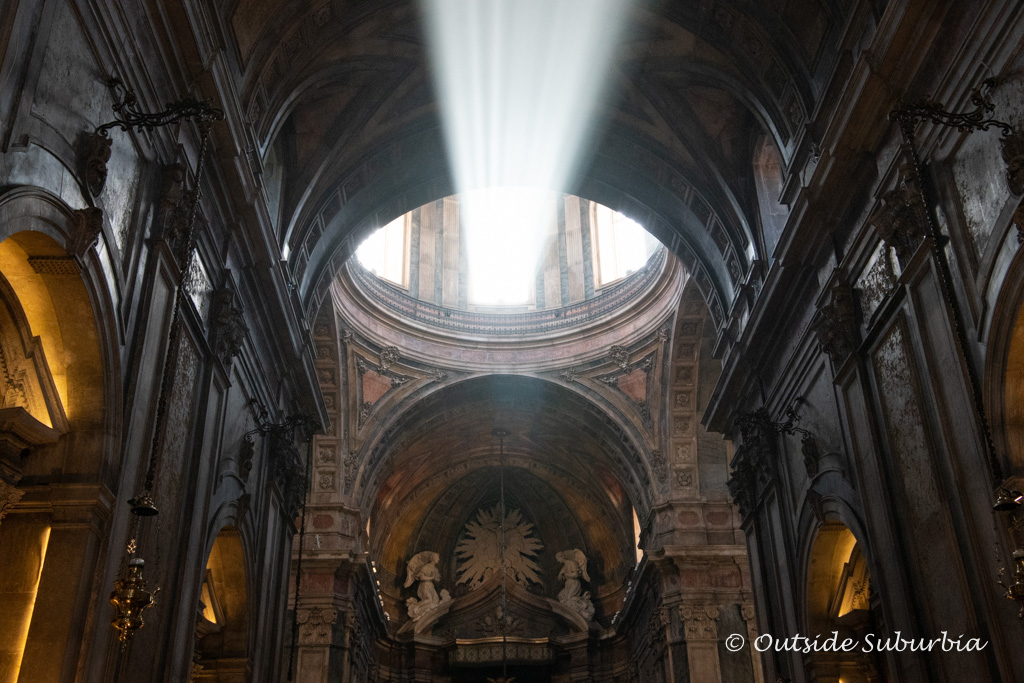
Like most churches in Lisbon, the Sé Cathedral suffered significant damage during the disastrous earthquake of 1755, when the south tower collapsed and much of the interior was destroyed. The current appearance of the church is mostly from the restoration work completed in the early twentieth century. The light beaming in from the recently reconstructed rose window were remarkable to see.
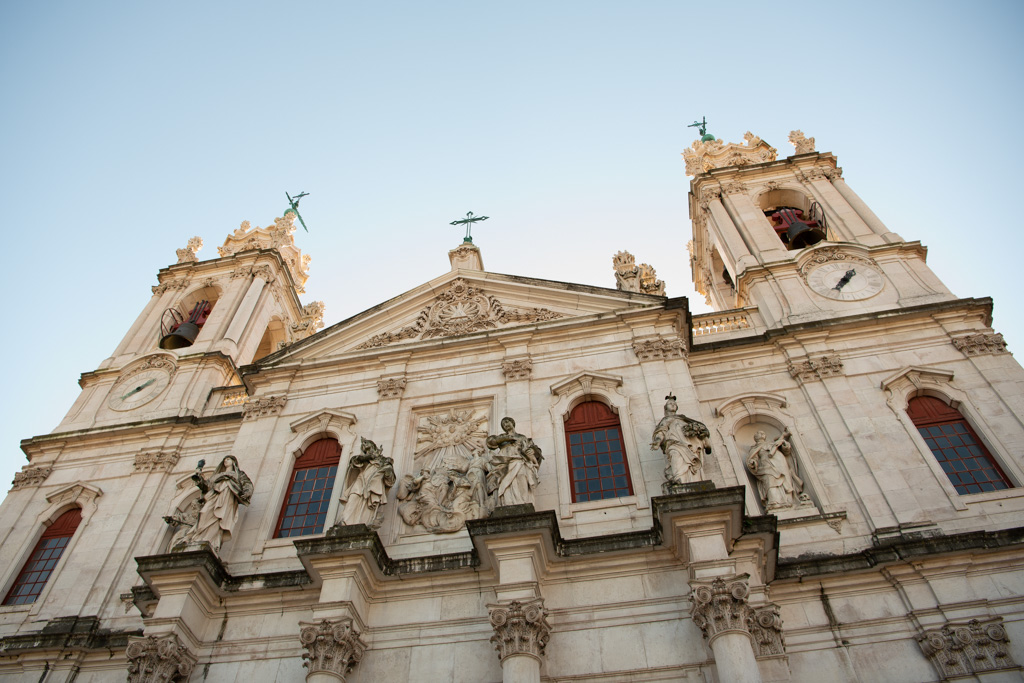
Jerónimos Monastery
Jerónimos Monastery is an important monument in the Belém area. Commissioned by King Dom Manuel I, it is a symbol of the Portuguese Discoveries and is a UNESCO-listed site since 1983. Inside lie Vasco da Gama’s stone tomb and of that of the great poet and chronicler of the Age of Discoveries, Luís de Camões. It is said that Vasco da Gama along with his men spent the night in prayer before departing on their expedition to the Orient in 1497.
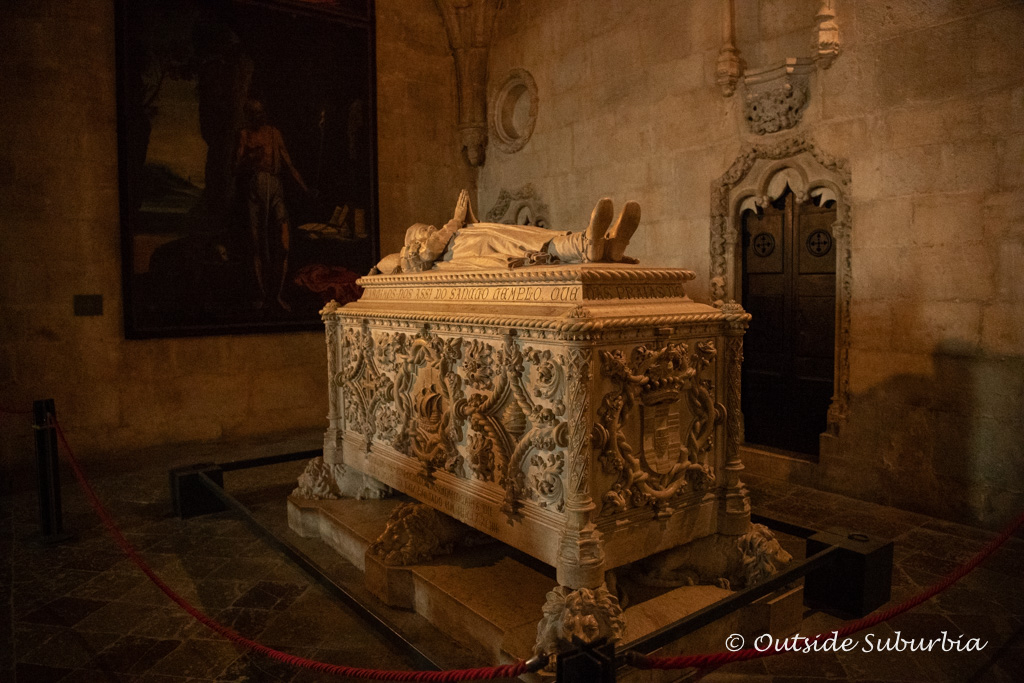
The monastery was designed in a manner that later became known as Manueline, a richly ornate architectural style with complex sculptural themes incorporating maritime elements and objects discovered during naval expeditions. The intricately carved limeston cloister arches are a popular spot for photos in Lisbon, we saw a few Instagram photoshoots there 🙂
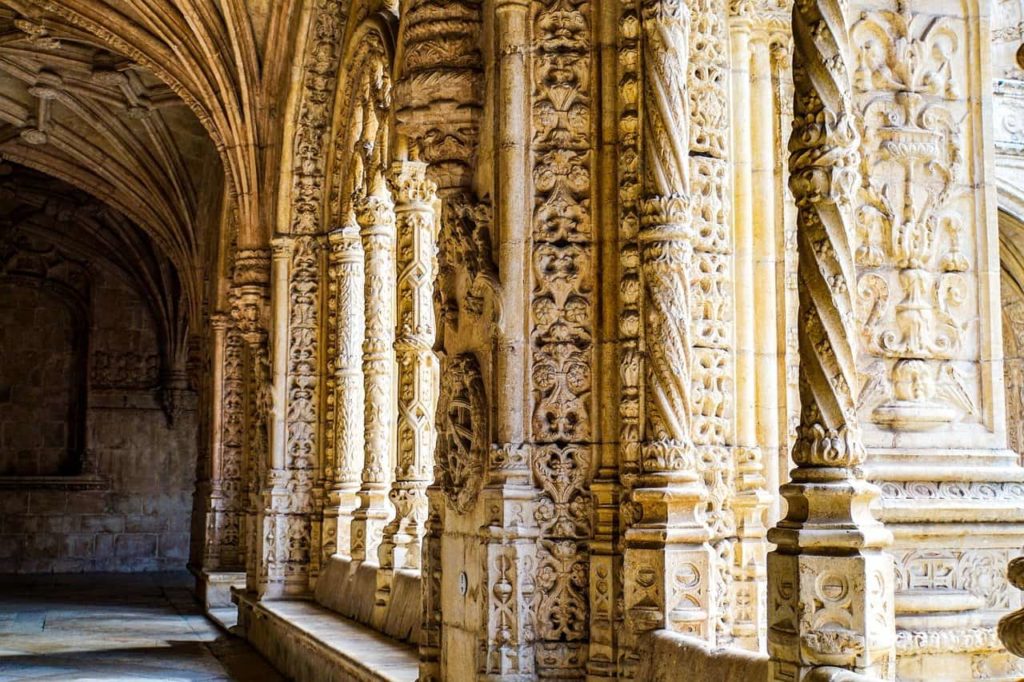
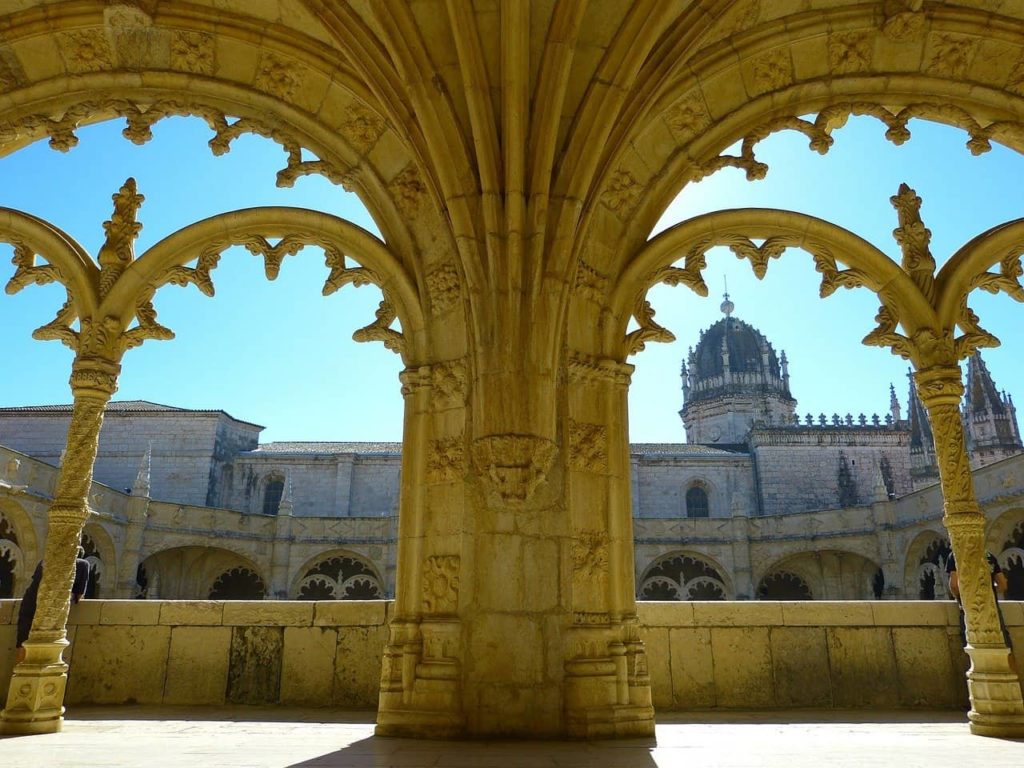
Torre de Belém
Originally built to serve as a fortress, and part of the River Tejo defense system, the Belém Tower is another famous Lisbon landmark and a UNESCO-listed monument. Belém Tower fired only once in 1579, before becoming a State prison under the Spanish occupation. You can climb up the tower or enjoy a sunset from a cafe nearby, which is what we did!
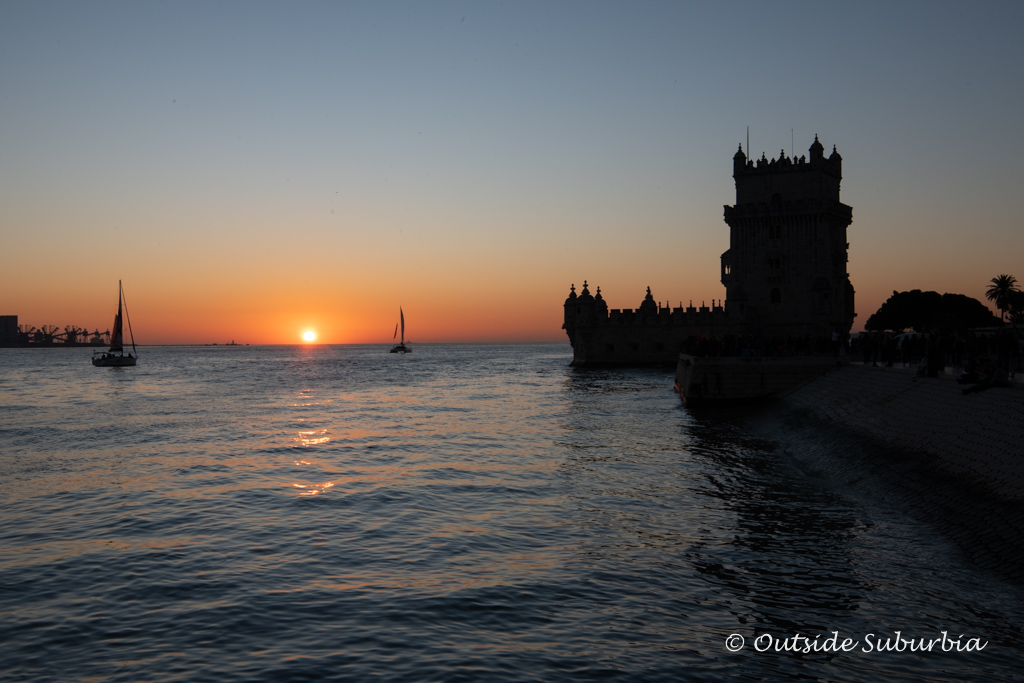
Padrão dos Descobrimentos Monument (Monument to the Discoveries)
As you walk from the Belém Tower along the river, stands the 170-foot tall Padrão dos Descobrimentos Monument (Monument to the Discoveries). The Monument to the Discoveries was originally built for the 1940 World Exhibition. It celebrates the achievements of explorers during the Age of Discoveries and the creation of Portugal’s empire.

The fifty meter (171ft) tall monument, shaped like a ship’s prow, that stands at the marina in Belém was the starting point for many of Portugal’s explorers. This is where in 1497 Vasco da Gama embarked on his voyage to India and a storm forced Christopher Columbus to anchor here on his way back to Spain after his discovery of the Americas.

The monument shows more than thirty statues of people who played an important role in the discoveries. Leading the way is Henry the Navigator who is shown standing on the bow holding a model of a caravel. Behind him are king Afonso V, who supported the exploration and colonization of Africa and the explorers Vasco da Gama (who found a direct route to India), Pedro Álvares Cabral (discoverer of Brazil) and Ferdinand Magellan (the first explorer to circumnavigate the world). They are followed by navigators, writers, missionaries, a mathematician, a cartographer and other figures from the era of the discoveries.
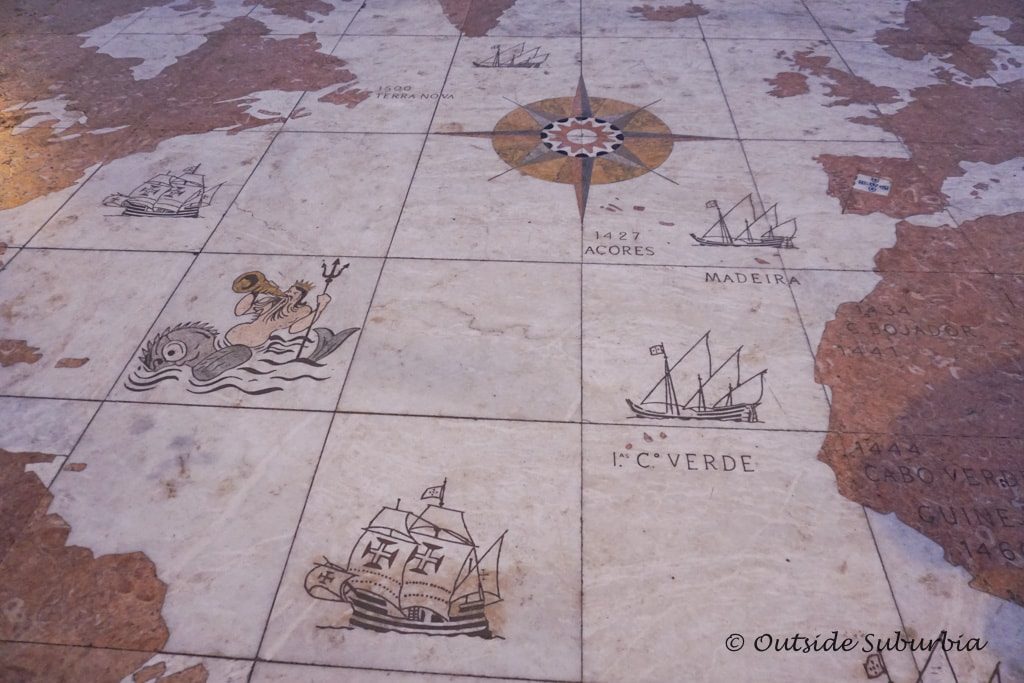
For a small fee you can enter the monument and climb to the observation deck on the top.
Explore the charming Alfama neigbourhood
We explored the Alfama with the help of our local tour guide Pedro from The Portuguese buddy. The narrow and almost maze-like medieval streets are easy to get lost in, but sometimes that is the best part of travel. Alfama is also well known for its fado restaurants and São Jorge that sits on the top of the hill at Alfama. Our guide mentioned that there are many small boutique places and rental you can find here, which will certainly make for an atmospheric stay!
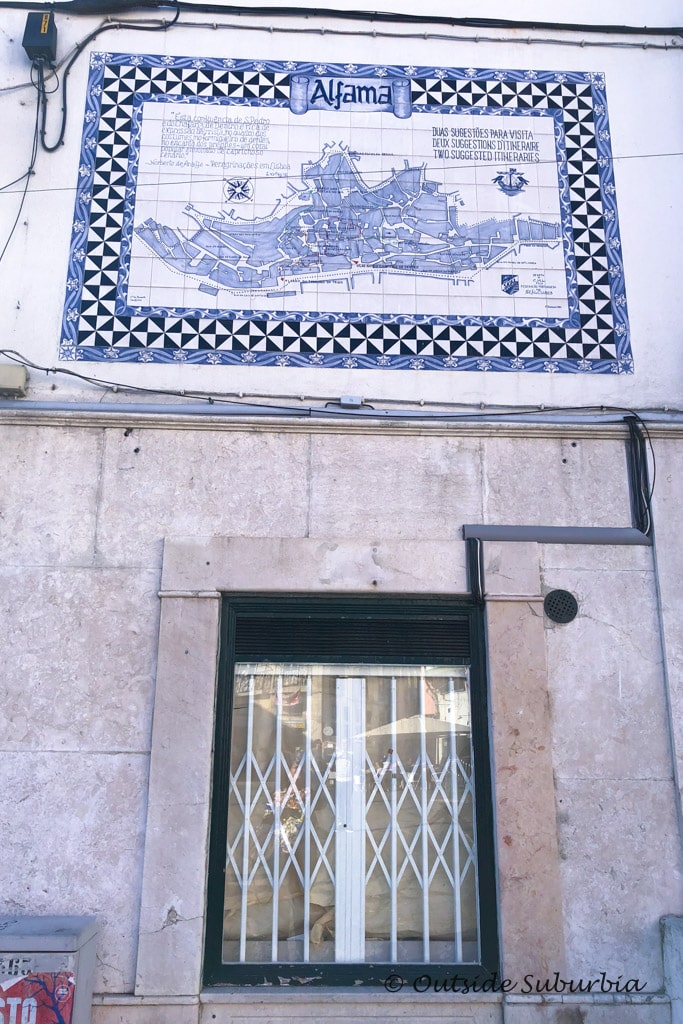
Chiado and Bairro Alto
Chic Chiado and bohemian Bairro Alto are two other neighborhoods worth exploring in Lisbon. Chiado is famous for its restaurants, cafés, bookshops, and shopping boutiques. You will find Lisbon’s opera house, Teatro de São Carlos here. Bairro Alto is a quiet residential area during the day and at night, especially at weekends, a diverse crowd fills the quirky pubs and bars, and you can hear the sound of Fado music playing in traditional restaurants.
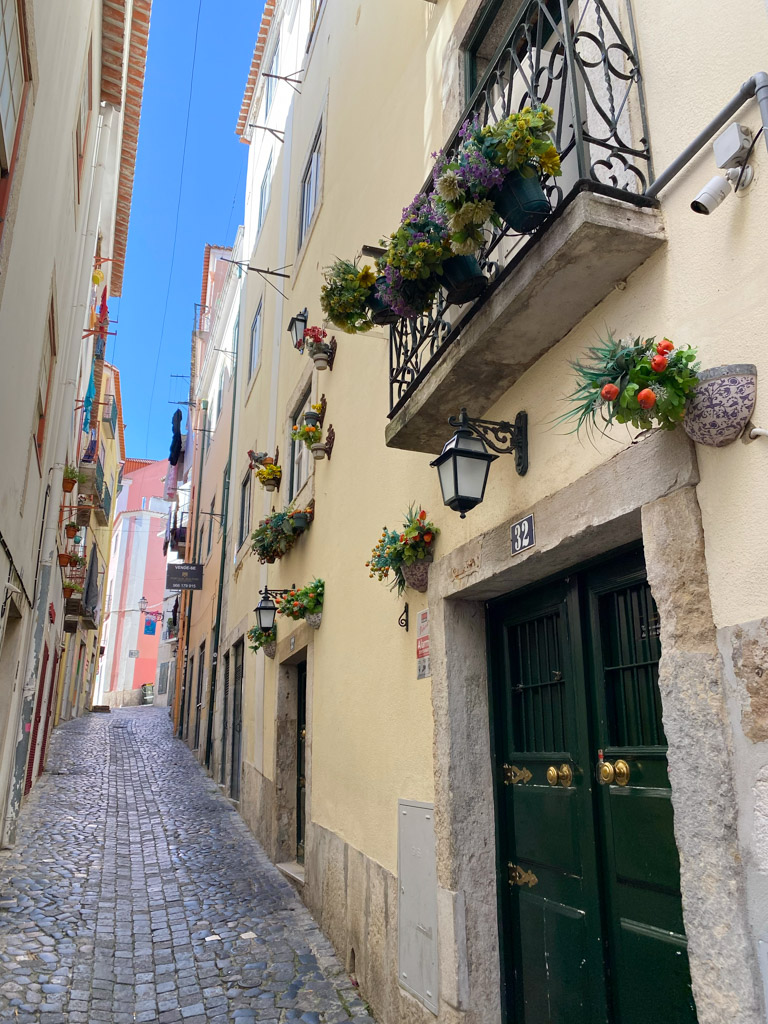
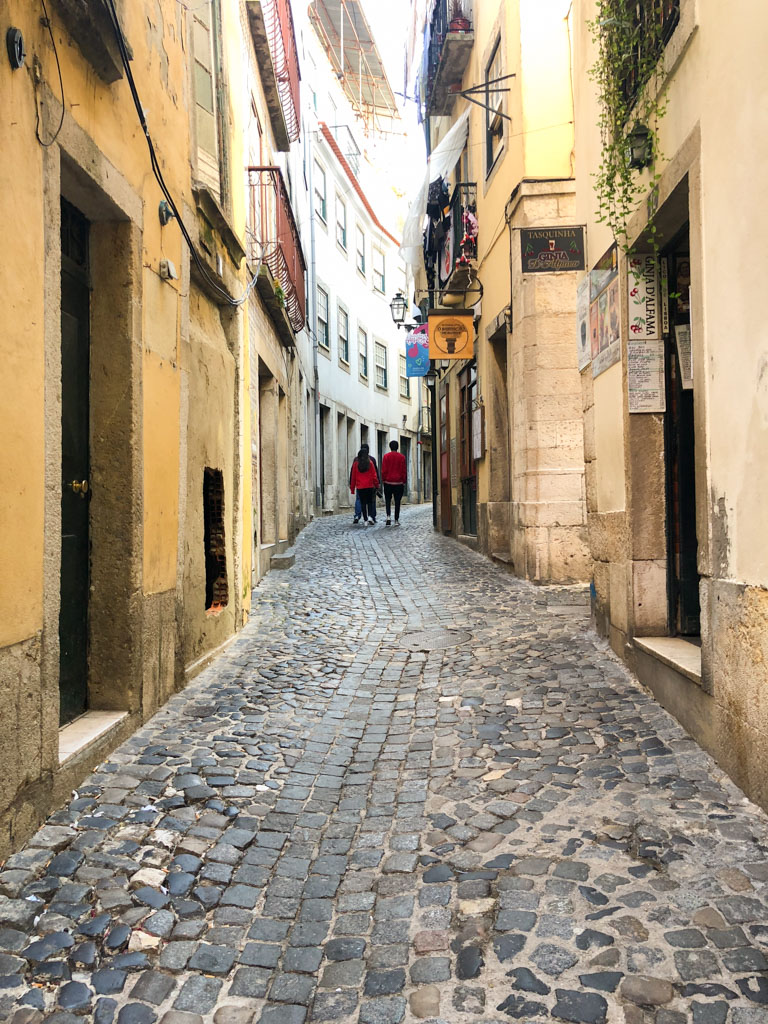
Praça Do Comércio (Terreiro Do Paco)
The riverfront Praça do Comércio, also known as Terreiro do Paço, is an important square in Lisbon. It was home to the royal palace for two centuries before being completely destroyed by the earthquake of 1755. Today, it is a pedestrian area that gives access to the River Tejo, connecting the Baixa to the nearby Cais do Sodré. You can climb up the arch for a nice view of the city.
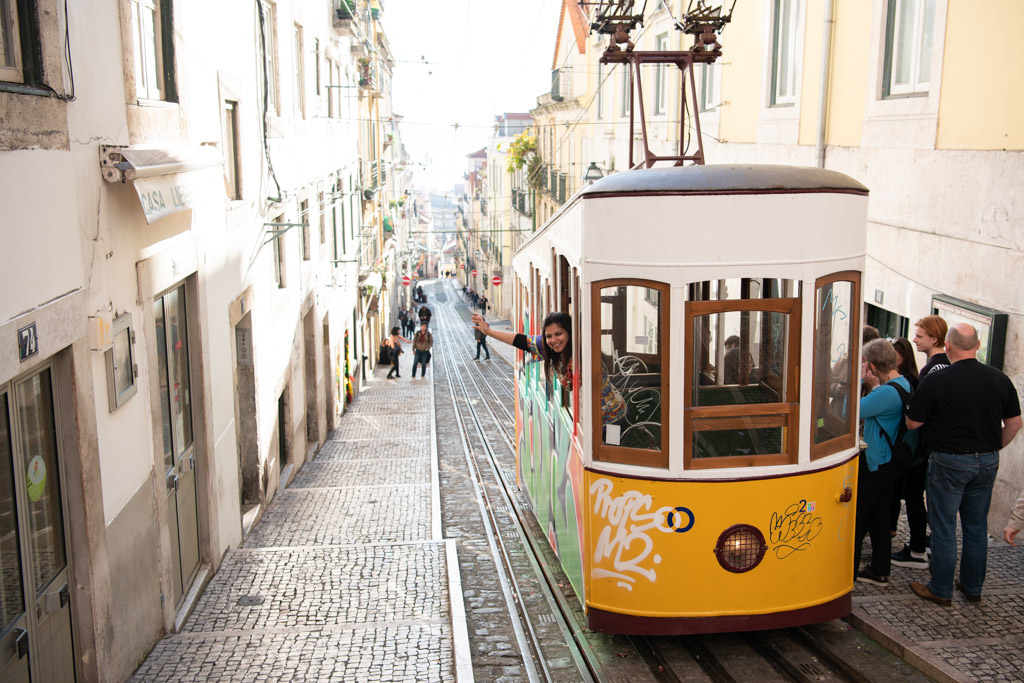
Since we were in Lisbon for New Year’s eve we decided to watch the fireworks and asked where the locals go to celebrate. The biggest and most popular party and fireworks display happen at Praça do Comércio (Terreiro Do Paco), we were told. Entry is free, and there was live music from around 10 pm. The artists were mostly Portuguese bands and singers, that we didn’t know. As midnight approached everyone started getting their bottles of espumante (Portuguese fizz) and plastic cups ready and then the big countdown happens. That is how we rang in 2020!
Getting out of that crowded square and the year was a different story!
Parque das Nações
We gave this one a miss but if you want to visit the Oceanarium, one of the largest in Europe, then you should add Parque das Nações to your Lisbon itinerary. Located along a 5 km stretch of the Tagus riverfront, in the heart of Lisbon, it has shops, restaurants and bars, thematic gardens, exhibition centers, shows and events. You can also ride cable cars here.
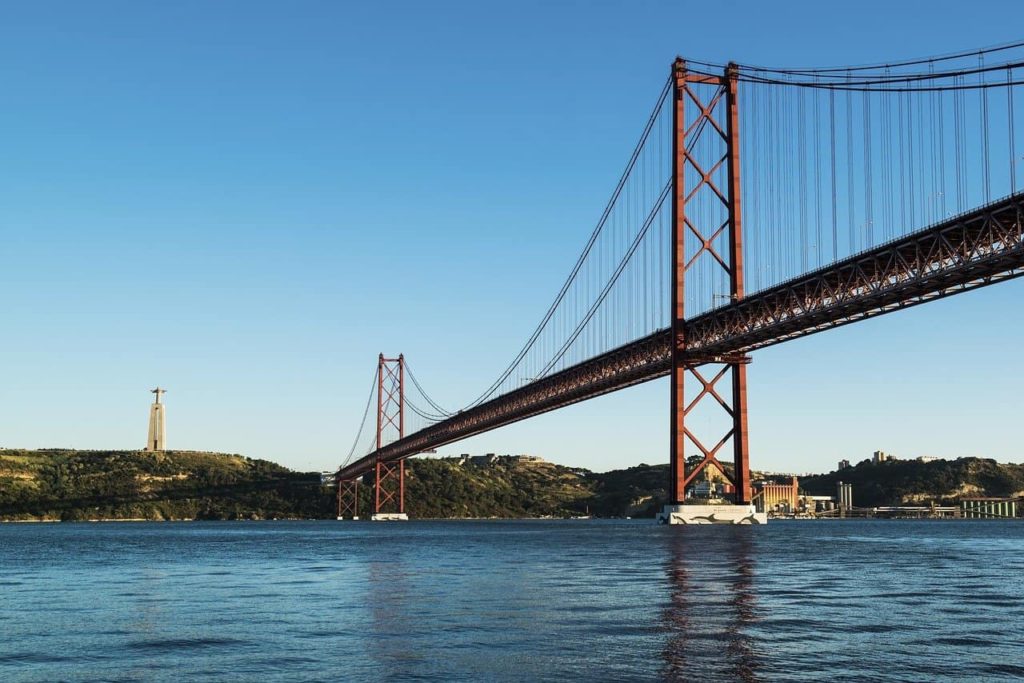
Rossio Square
The beautiful Rossio Square situated in the heart of Lisbon is worth adding to your Lisbon Itinerary for a quick stop. It has seen executions, riots and celebrations during the medieval days but nowadays the area is dotted with many cafes, bars, restaurants and shops. Some of which date back to the 18th century like the famous Café Nicola which used to be a gathering place for artist and poets.
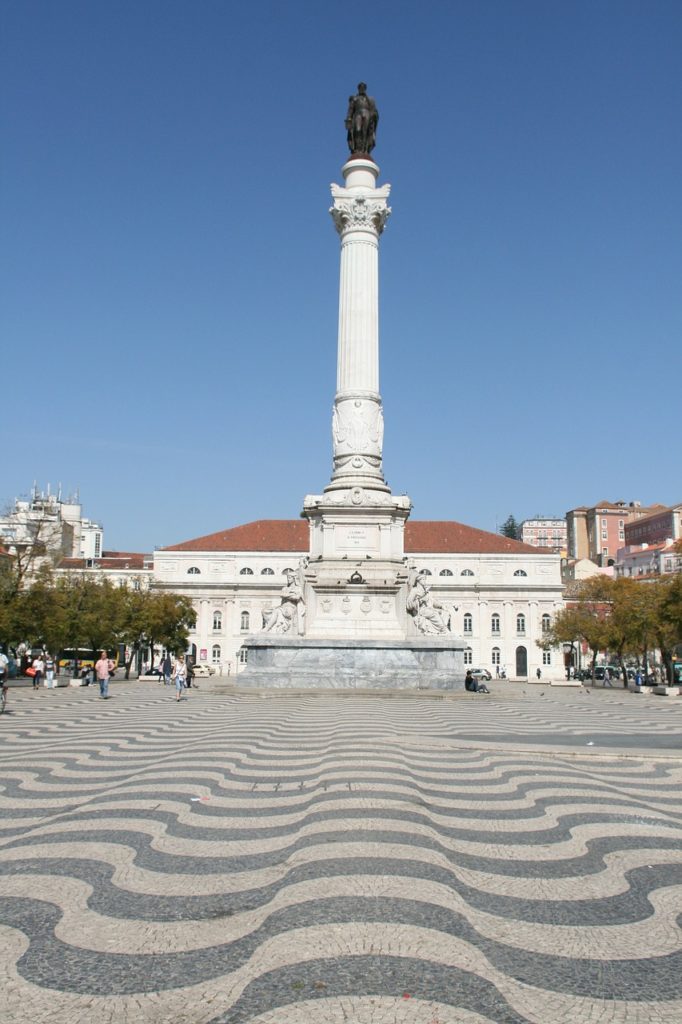
The Rossio square itself is beautiful to look at with its unique wavy pattern of tiled pavement. The column of Pedro IV, the King of Portugal sits in the middle of the square along with two baroque fountains on each side.
Take the Tram!
One of the best ways to discover Lisbon and its historic neighbourhoods is to ride on the Tram 28.
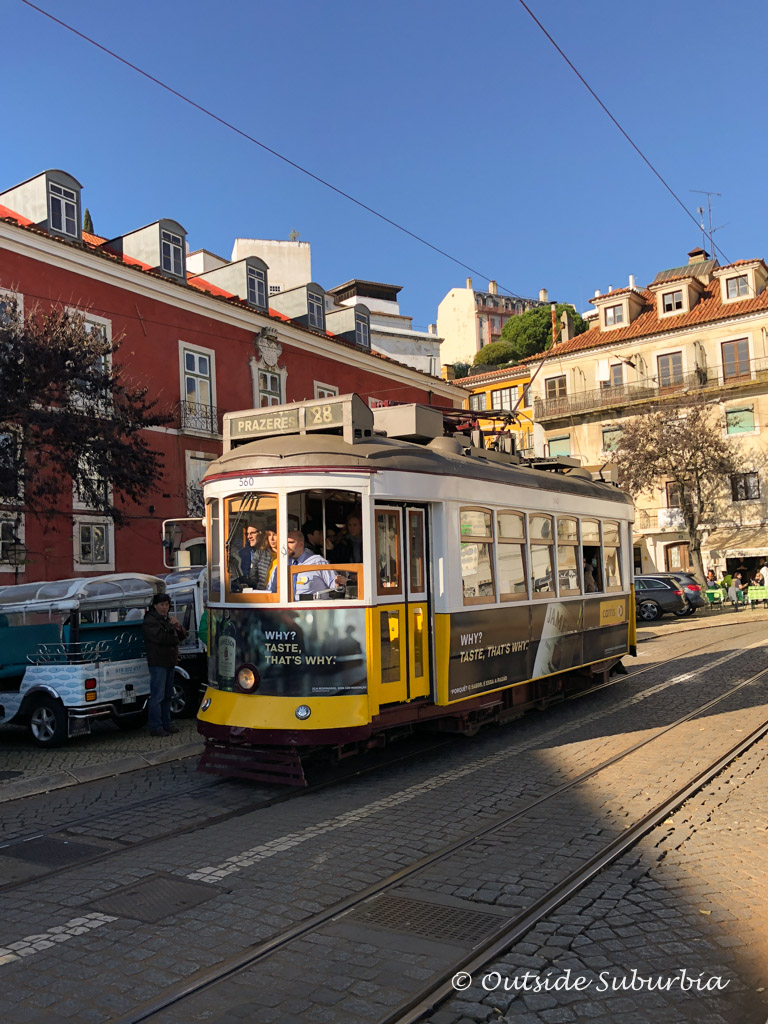
You can do a classic Lisbon city tour by taking the number 28 tram, which passes through the popular districts of Graça, Alfama, Baixa and Estrela. The trams are smaller and pass through the labyrinth of narrow streets of the old quarters in Lisbon. It is a fun way to see the city and you can visit a few viewpoints (miradouro) along the way. The entire route from Martim Moniz to Campo de Ourique / Prazeres takes approximately one hour.
Tip: Get the Lisbon Card and you can get free admission to top attractions and discounts at various landmarks. It is available in 24, 48, or 72 hour formats, the card provides unlimited free access to the public transport system including trams.
Best Miradouro (Viewpoints) in Lisbon
The city of Lisbon is built on many hills and many viewpoints or miradouros where you can enjoy the terracota tiled rooftop views and sunsets.
Elevador de Santa Justa
This Gothic looking elevator is one of the most popular attractions in the center of Lisbon. The Elevador de Santa Justa is one of the most unique attractions of Lisbon. This 19th century industrial age marvel transports passengers up 45m from the Baixa district to the Largo do Carmo.
Historically the Elevador de Santa Justa was an invaluable part of Lisbon’s public transport network, an iron elevator built in the nineteenth century to connect the Baixa district with the Bairro Alto district situated at a higher elevation. Now it is one of the highlights of the Baixa district and a viewing platform has been created at the top of the lift, and from where you can see some of the finest views of central Lisbon.
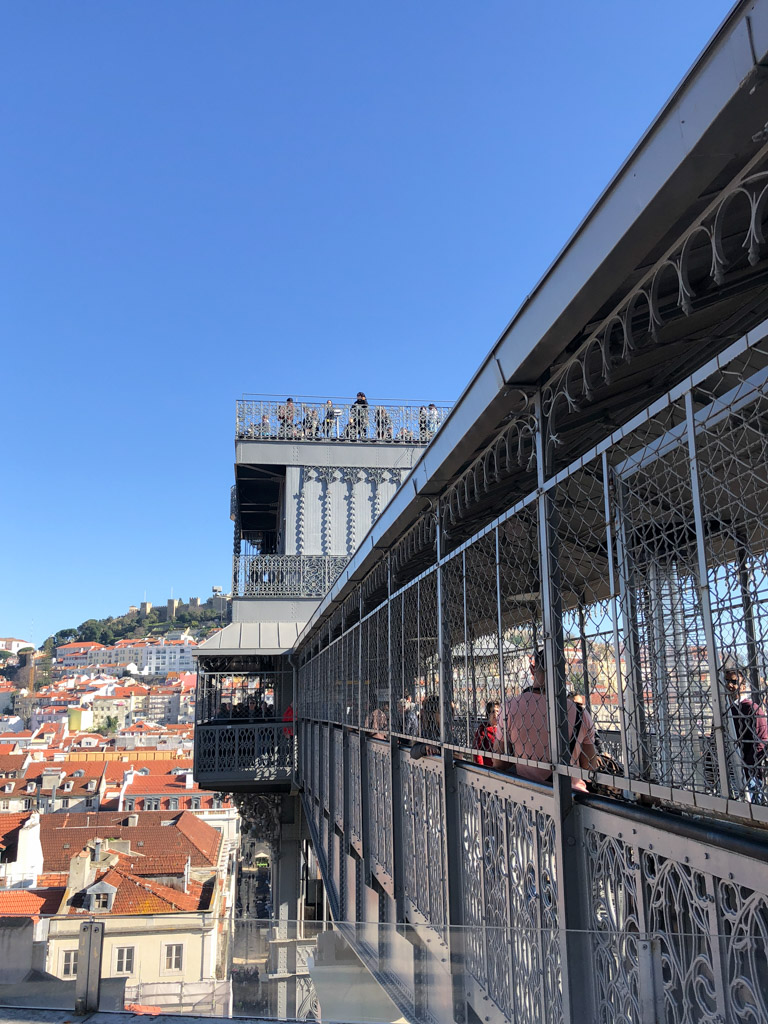
The Elevador de Santa Justa comes from an era when wrought-iron was not just a construction material but also an elegant art form. The exterior structure of the elevator is adorned with neo-gothic arches and geometric patterns, while inside two polished wood carriages whisk passengers up in style.
If the line to get through the elevator is too long, walk up the hill (or take a tuk tuk) to Convento do Carmo (the ruins are pretty unique), from where you can still get on the platform of the Elevador de Santa Justa. It is one of Lisbon’s best miraduoros (viewpoints).
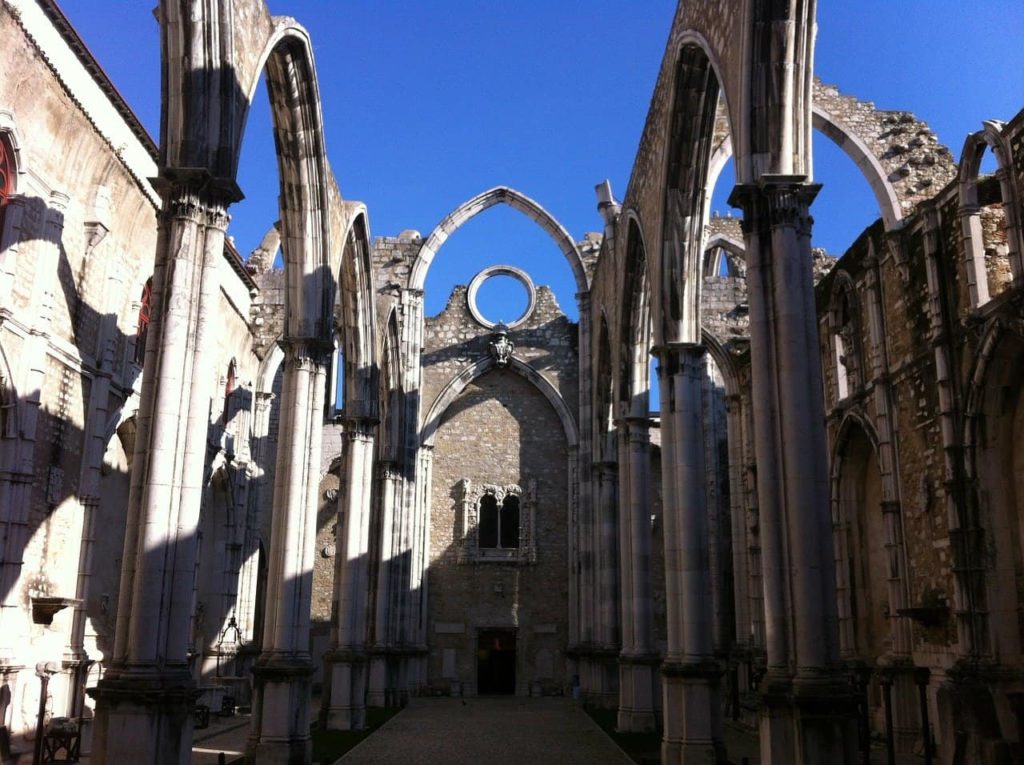
Largo do Carmo, a lovely little plaza, decorated with cobblestone pavement, historic monuments, and jacarandas trees (during Spring when those trees are blooming it would be so pretty) is worth spending some time.
Miradouro das Portas do Sol & Miradouro de Santa Luzia
Miradouro das Portas do Sol viewpoint offers one that postcard view of Lisbon with tiled roofs and river Tagus in the background.
Nearby is Miradouro de Santa Luzia, the popular observation deck with a pergola offers dramatic views of Lisbon and the river. Both are a great spot for picture perfect photos in Lisbon!
An attraction that is often overlooked by tourists is the tunnel under Miradouro das Portas do Sol. It is one of the best-kept secrets in Lisbon. In a tunnel, you will find the history of Lisbon explained in cartoons painted on the wall. You will find some kiosks (quiosque) where you can get drinks and snacks. Nearby there is a staircase down to Rua Norberto de Araujo and on the left you will find the tunnel. (Unfortunately, we didn’t know about it till later).
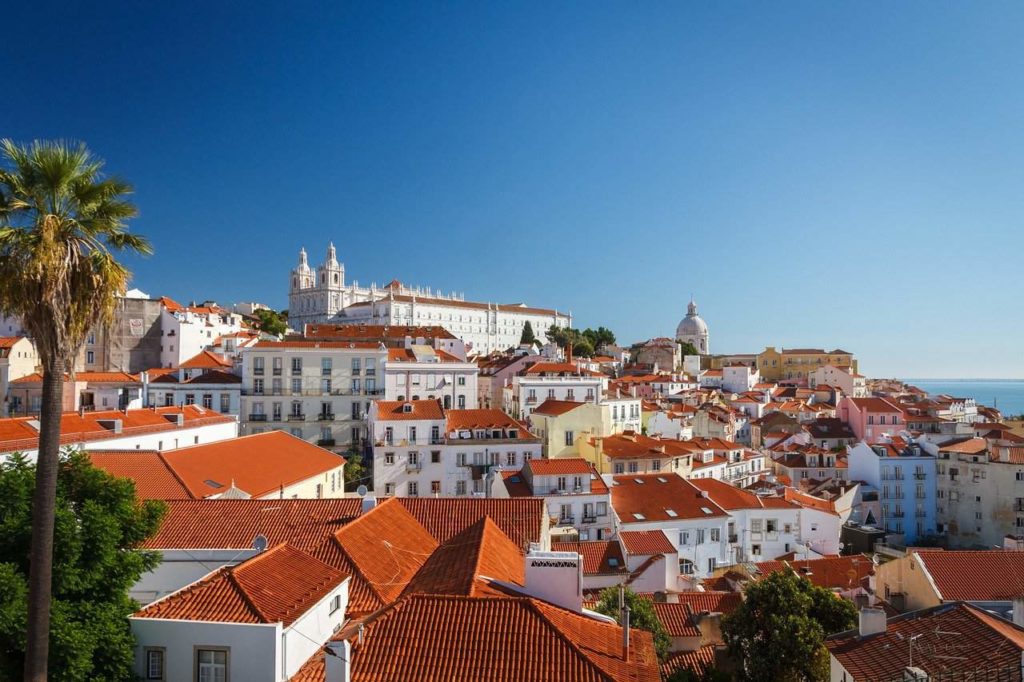
Arco da Rua Agusta
The Rua Augusta Arch is a stone, triumphal arch and visitor attraction in Lisbon, Portugal, on the Praça do Comércio. It was built to commemorate the city’s reconstruction after the 1755 earthquake. It has six columns and is adorned with statues of various historical figures. If you climb to the top of this ceremonial arch in Lisbon you will be rewarded with some great views of the Tagus River and Baixa neighborhood before heading to the Clock Room to learn more about the history of the arch.
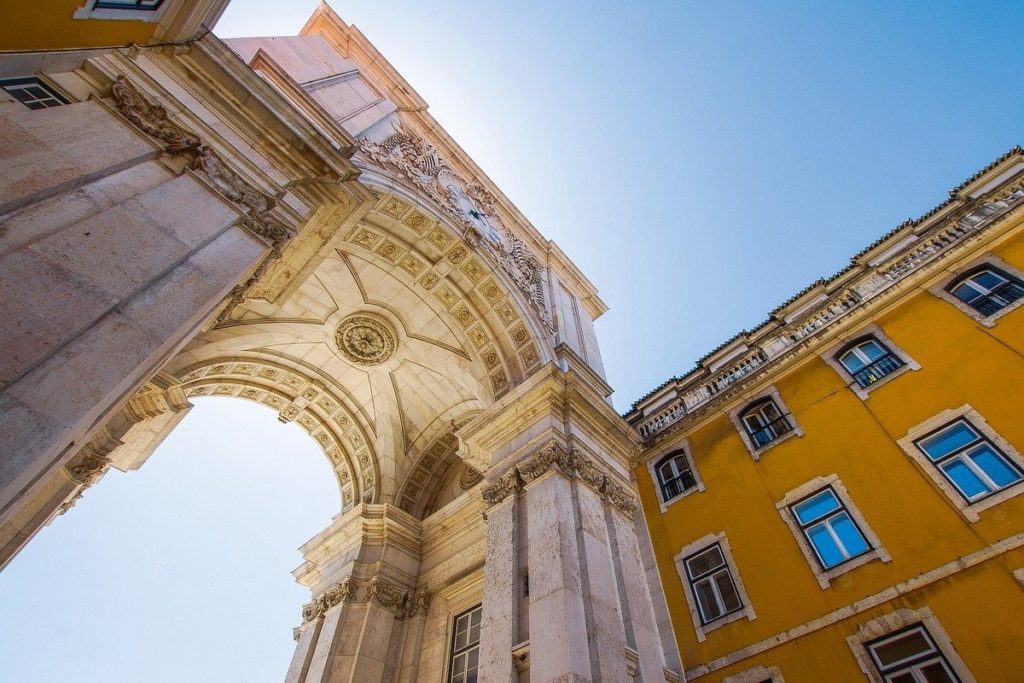
São Jorge Castle
São Jorge castle that sits on the hill at Alfama, is another great viewpoint. It’s one of Lisbon’s popular attractions and most visited tourist sites. More than the castle itself, its position on one of the highest of Lisbon’s seven hills makes it one of the best views of Lisbon and the River Tejo.
Our Lady of the Hill Viewpoint (Miradouro da Senhora do Monte)
Perched upon a hillside, Miradouro da Senhora do Monte, (Our Lady of the Hill), looks out over the city and is the best lookout point or miradouro in Lisbon. You get uninterrupted panoramic views across Lisbon from the stunning old quarters and castle to the downtown district of the city and beyond.
Miradouro da Senhora do Monte is one of the highest points in Lisbon, an azulejos tile panel points out the things that can be seen from the viewpoint. It is a great place to watch the sunset and also to get some amazing photographs of Lisbon as well as the Tagus River estuary and the Castle of Saint George.

If you are taking the Tram 28 then you will get off near Rua da Graça and walk west along Rua da Senhora do Monte. There is a small chapel that was built by Augustinian monks after the recapture of Lisbon in 1147. They took care of the hermitage near the miradouro and placed stones in the shape of a chair that belonged to the saint.
A legend goes that pregnant women who sat in the chair had safe childbirth. Maria Ana of Austria, the wife of King João V is said to have sat here when she was pregnant with the heir to the throne.
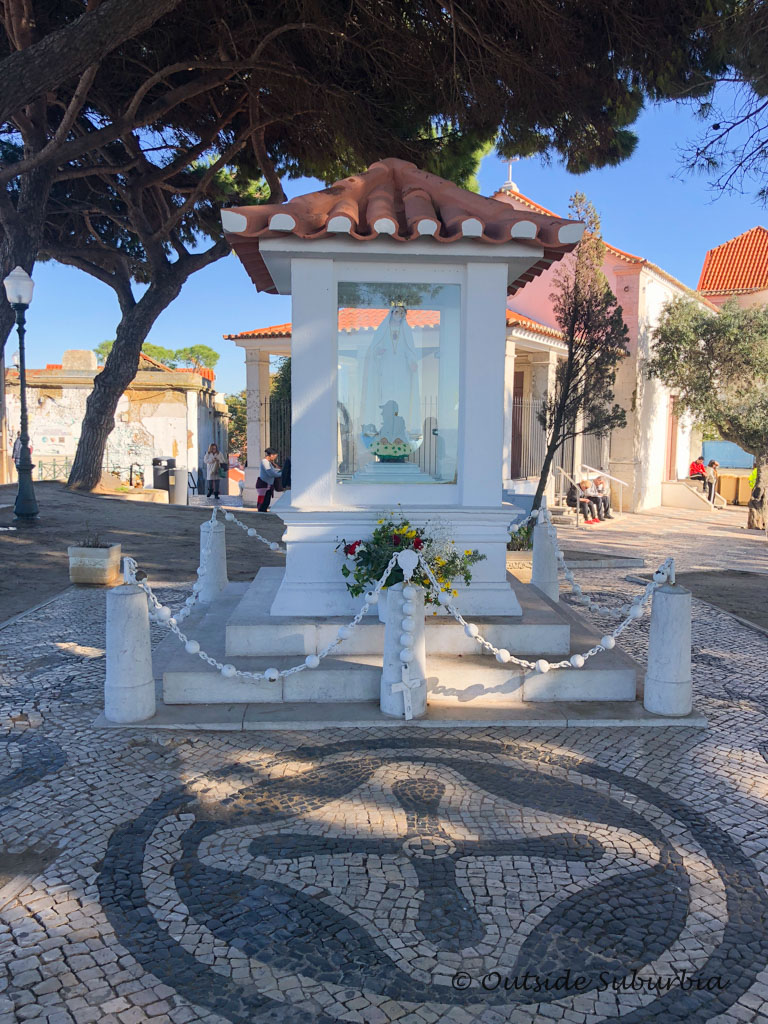
Miradouro da Graça
Owing to its location just outside the main city, this spot is often missed by many visitors. Located in Graca up on the hill is the Miradouro da Graça is a little off-the-beaten-path attraction in Lisbon. It is about 10 minutes uphill walk from São Jorge Castle. Miradouro da Graça offers a panoramic view of Tagus river, the Abril bridge, Sao Jorge Castle, views of central Lisbon.
Amongst the grounds sits Graça Church, one of Lisbon’s oldest, which was built in 1271, There is a small statue of the Virgin and the Nossa Senhora do Monte Chapel which is dedicated to Saint Gens, a martyr and ancient bishop. It worth getting to this miradouro in Lisbon. There is a lovely pine-shaded terrace, little shops and markets.
Praça Dom Pedro IV, 1100-193 Lisboa, Portugal
Feel the Fado, a must-do when visiting Lisbon
A lone, powerful voice coupled with the 12-string Portuguese guitarra are all that is needed to bring listeners to tears, as songs recall broken hearts, unfulfilled dreams and the lost days of youth. Listening to the raw emotions of Fado is one of the best experiences when visiting Lisbon. Even non-Portuguese speakers can appreciate these great fadistas. You don’t have to understand, you just feel the Fado!
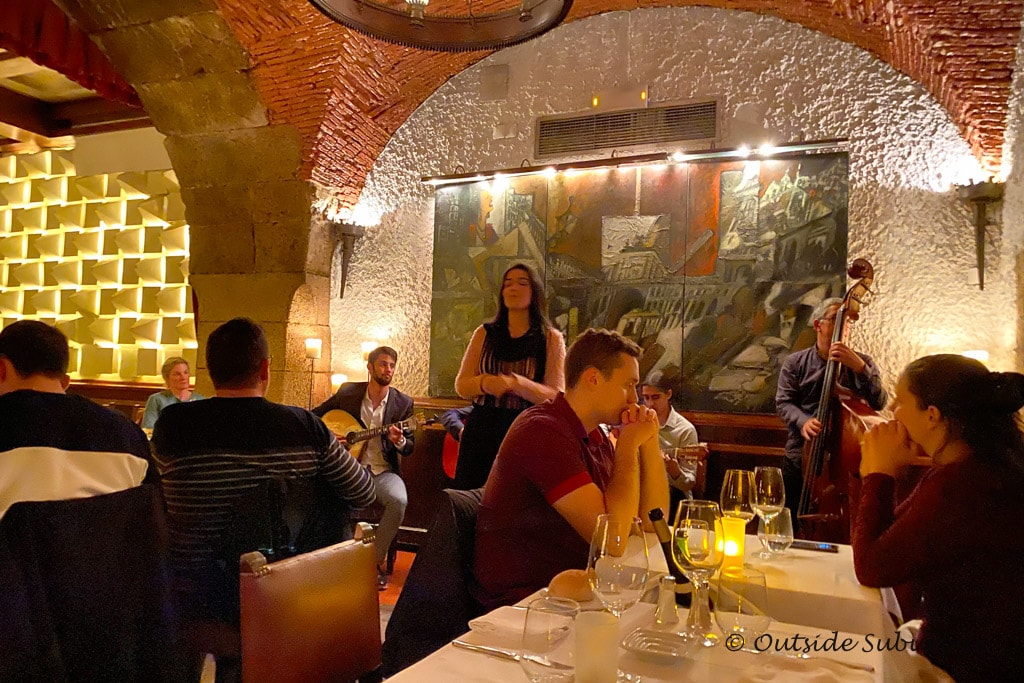
The melancholic music of fado has been around for centuries. Born in a working-class Lisbon neighborhood, despite its years, fado remains a living art. We enjoyed an authentic Fado show in a family-run elegant restaurant called Café Luso.

Where to eat in Lisbon
The area of Chiado and Bairro Alto has the highest concentrations of places to eat in Lisbon. While I don’t have many recommendations of Lisbon restaurants, here are a couple we really enjoyed:
Michelin star chef Jose Avillez’s Bairro do Avillez in Chiado
Fado and dinner at Cafe Luso
Restaurant Gambrinus
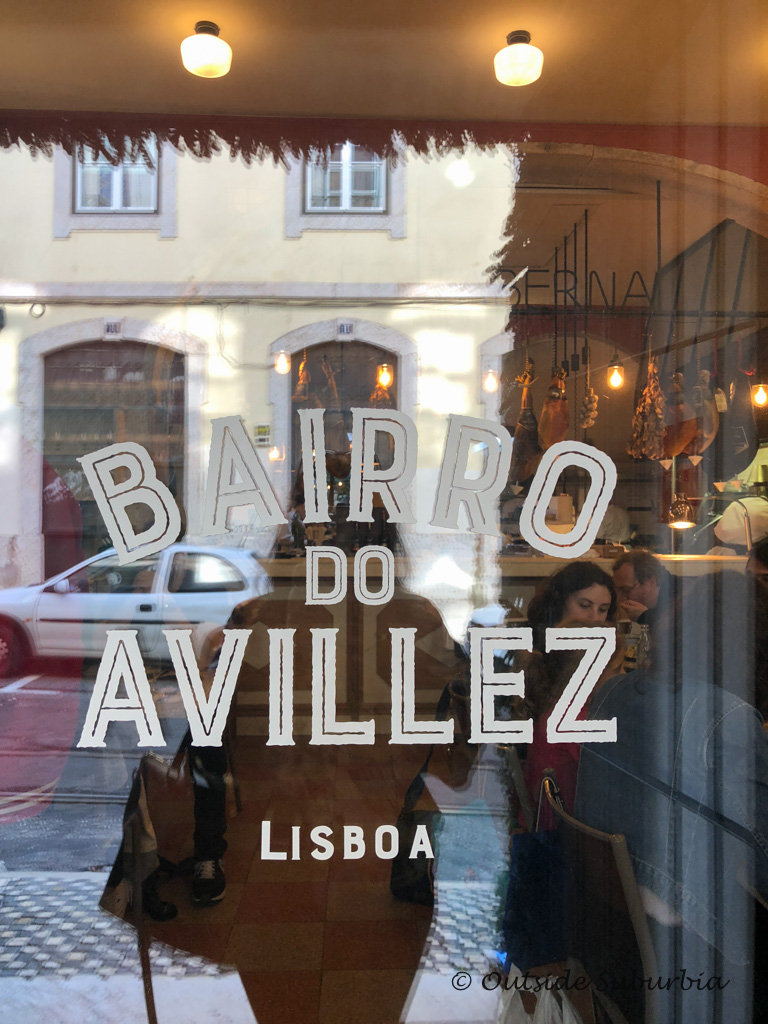
Museums in Lisbon
If you like the blue tilework that you see all over Lisbon known as Azulejos, you might want to visit Museu Nacional do Azulejo (National Tile Museum).
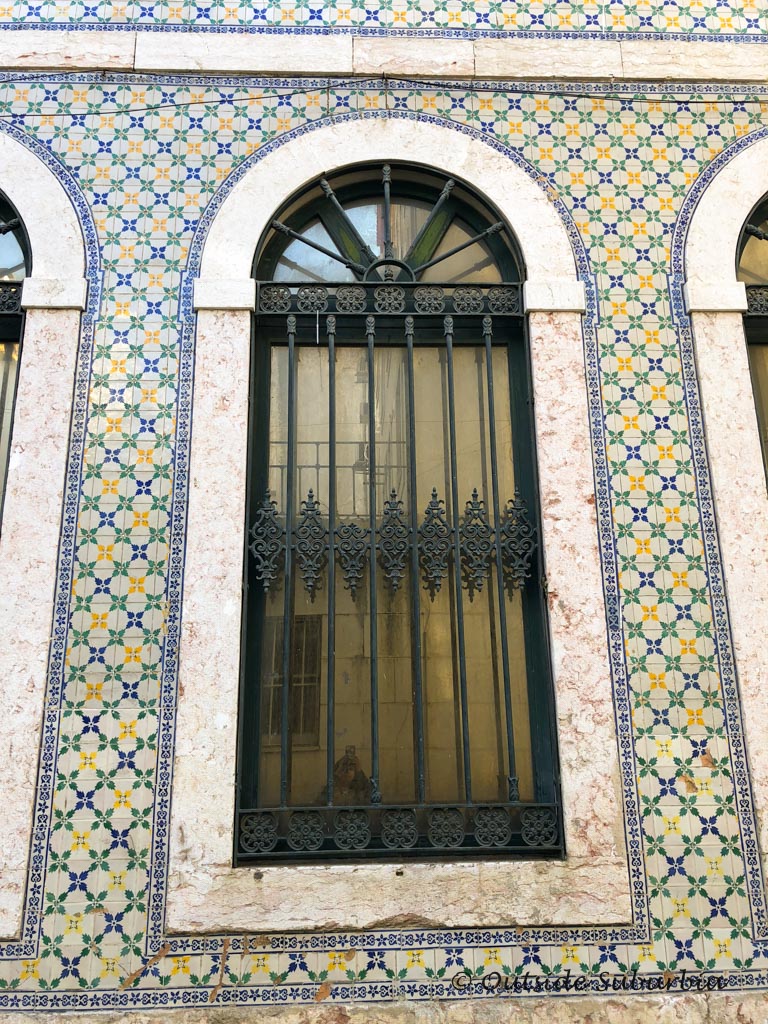
I loved seeing these detailed tile works in Porto but you can see them on walls and buildings in Lisbon. The National Tile Museum is the best place to learn about them and IMO one of the best things to do in Lisbon. There is also a little cafe and restaurant in the leafy courtyard of the museum if you want to enjoy a snack or espresso.
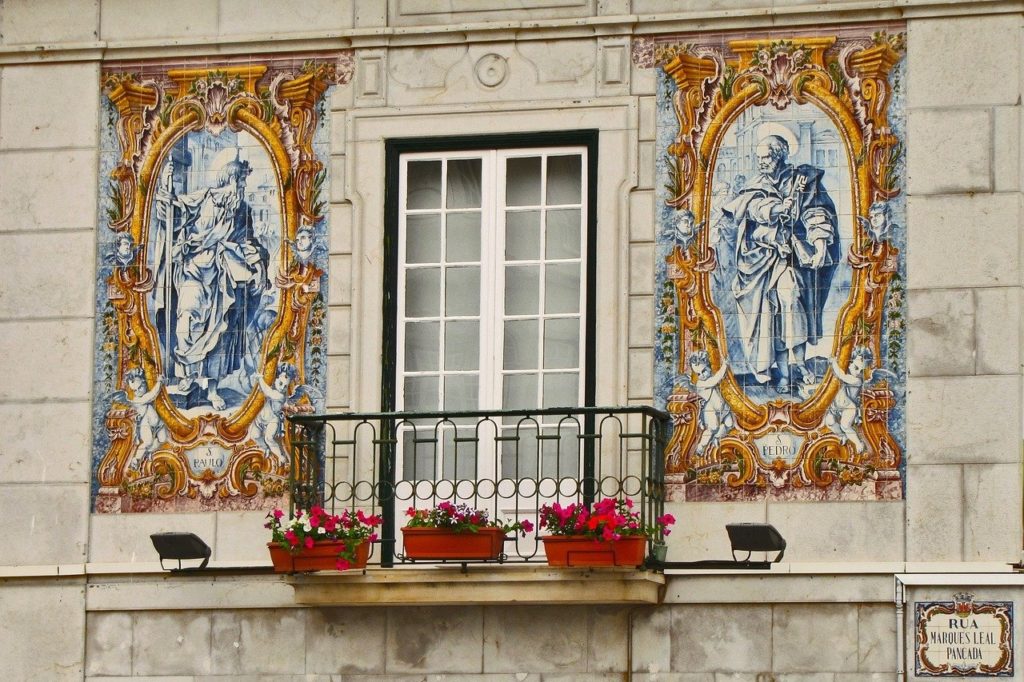
National Museum of Ancient Art houses paintings, sculptures, furniture, ceramics, textiles, gold, and silverware that capture Portugal’s history from the Middle Ages through the 19th century.
Berardo Musuem is a Lisbon art museum on my list to visit next trip. It houses modern and contemporary artworks that range from Minimalism and Conceptualism to Cubism and Surrealism. It includes a few Roy Lichtenstein, Pablo Picasso, Marcel Duchamp, Francis Bacon, Jean-Michel Basquiat, Cindy Sherman, and Andy Warhol – all belong to José Manuel Rodrigues Berardo, a billionaire entrepreneur and philanthropist.
Other Lisbon Museums: Museo do Fado, National Coach Museum
Souvenirs to take home
Portugal is well known for its cork production. You will find purses, shoes and phone cases made of cork. Ginjinha, a cherry liquor is also a popular souvenir to bring home as well as Sardine cans. As part of Portuguese’s diet, fresh sardines can be found everywhere but you can also find canned versions, making them a perfect and unique souvenir to take home from Portugal. Azulejos (hand-painted tiles), ceramics and porcelain also make great souvenirs to bring back from Lisbon.

When to visit Lisbon
The best months to visit Lisbon are during the shoulder season. From March to May and September to October, the temperatures are a bit cooler and the crowds smaller.
But if you want to enjoy the beaches near Lisbon then summer is probably a better option. We were visiting Lisbon in December and the temperatures were cooler temperatures but not too cold. While we didn’t get to enjoy the beaches, we did like that we were not too hot when hiking up and down all of the hills of Lisbon!
Lisbon Tours
TIP: Hire a local guide, we loved Pedro, the Portuguese Buddy!
You might also like: Family-Friendly Guide to Copenhagen, Edinburgh, Milan, Vienna, Bergamo, Barcelona, Venice, and Verona
Other Posts from Portugal:
Best Portuguese Desserts
Photo spots and a 3 Day Porto Itinerary
28 Beautiful places to visit in Portugal
A Scenic drive to Douro Valley
A day trip to Evora
Obidos, Aveiro, Coimbra & Praia da Costa Nova
Sintra and the Portuguese Riviera
PIN IT FOR LATER
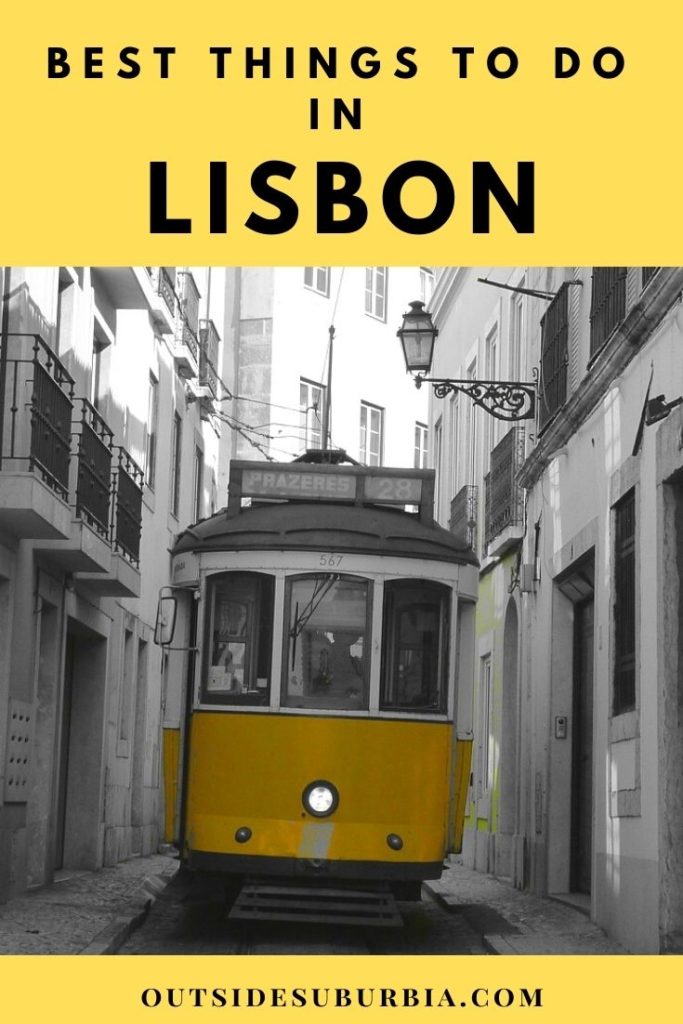
Note: This post may contain affiliate links, partnership or sponsored content. If you purchase an item via one of these links, we may receive a small commission at no extra charge to you. But as always images and opinions are our own. For more information on our affiliates and privacy policy at Outside Suburbia see here.
CONNECT WITH US
